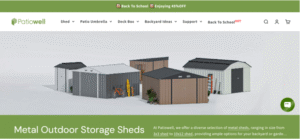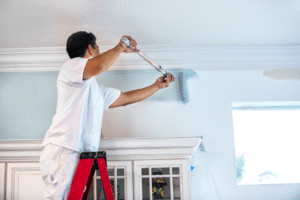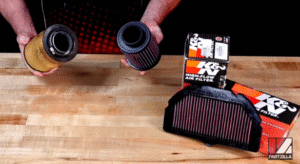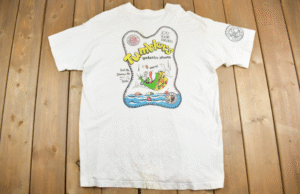
Choosing the best pool pump for your setup isn’t just about picking the first one you come across; it requires careful consideration of your pool’s specific needs. You’ll want to think about the size of your pool, how frequently it’s used, and your energy efficiency goals. There are various types of pumps—single-speed, dual-speed, and variable-speed—each offering unique benefits and drawbacks. Understanding these differences can make a significant impact on your pool’s performance and your energy bills. But what’s the most efficient way to determine the right pump size and speed for your pool?
Understanding Pool Pump Types
Choosing the right pool pump is crucial, and understanding the different types is the first step. You’ll generally find three main types: single-speed, dual-speed, and variable-speed pumps, each catering to different needs and preferences.
Single-speed pumps run at a constant speed, offering simplicity but not much efficiency. They’ve a straightforward installation process but may not optimize pump capacity.
Dual-speed pumps provide flexibility with high and low settings, allowing you to adjust the pump capacity based on your pool’s requirements. These pumps are slightly more complex to install, but they offer improved energy efficiency compared to single-speed models.
Variable-speed pumps are the most advanced, featuring multiple speed settings that can be tailored to your pool’s specific needs. They excel in optimizing pump capacity and offer the highest energy savings. However, their installation process can be more intricate, often requiring professional assistance.
When choosing between these types, consider your pool’s size, usage, and energy efficiency goals. Each type has its pros and cons, and understanding them will help you make an informed decision. Proper installation is key to ensuring your pump operates efficiently and effectively.
Determining the Right Size
Determining the right size for your pool pump is essential to ensure optimal performance and energy efficiency. Begin by calculating the volume of your pool in gallons. This figure helps you determine the pump capacity, which is the amount of water your pump can circulate per minute or hour. Ideally, you want a pool pump that can turn over the entire pool volume within 8 hours.
Next, consider the flow rate required for your pool’s filtration system. Your filter has a maximum flow rate it can handle, and your pump capacity must be compatible with this to avoid overloading the filter. Check the filter’s specifications to confirm its flow rate, typically measured in gallons per minute (GPM).
You’ll also need to account for the total dynamic head (TDH), which includes the resistance caused by your pool’s plumbing, fittings, and elevation changes. Higher TDH requires a pump with greater horsepower. Use a TDH calculator or consult with a professional for accurate measurements.
Lastly, balance the pump capacity and filter compatibility to ensure efficient water circulation and filtration. A correctly sized pump reduces energy consumption and extends the lifespan of your pool equipment, offering both performance and cost benefits.
Evaluating Energy Efficiency
After aligning the pump capacity with your pool’s requirements, the next step involves evaluating energy efficiency. To achieve maximum cost savings, look for pumps that carry an ENERGY STAR certification. These models typically use up to 70% less energy than standard pumps, translating into significant savings on your electricity bill over time.
Consider the pump’s operational features as well. Variable-speed pumps are often more energy-efficient than single-speed models. They allow you to adjust the motor speed to meet your pool’s specific needs, reducing unnecessary energy consumption. Although they may have a higher upfront cost, the long-term savings and reduced environmental impact make them an excellent investment.
You should also examine the pump’s hydraulic efficiency. Efficient hydraulic designs reduce resistance and improve water circulation, which further minimizes energy use. Look for models with optimized impellers and volutes that enhance flow and reduce drag.
Comparing Speed Options
When it comes to comparing speed options for pool pumps, you have three primary choices: single-speed, dual-speed, and variable-speed pumps. Single-speed pumps operate at one constant speed, making them the least efficient in terms of energy usage but straightforward in terms of installation requirements. They tend to have higher noise levels and can be more costly in the long run due to increased energy consumption.
Dual-speed pumps offer more versatility by allowing you to switch between a high and low speed. This provides a better efficiency comparison to single-speed pumps, especially when operating at the lower speed. While the initial cost is higher, they can save you money over time. Installation requirements are slightly more complex but manageable.
Variable-speed pumps are the most advanced and efficient option available. They allow you to adjust the pump speed to your exact needs, drastically reducing energy consumption and noise levels. Although the cost analysis shows a higher upfront investment, these pumps can significantly lower your energy bills. Installation requirements are more intricate, often necessitating professional assistance.
Considering Maintenance Needs
Proper maintenance is crucial to ensuring your pool pump operates efficiently and lasts for years. Start by understanding the cleaning frequency required for your specific pump model. Regularly clean the pump basket, impeller, and filter to prevent clogs and maintain optimal water flow. Check the manufacturer’s guidelines for exact intervals, but generally, a weekly cleaning schedule is recommended during peak usage periods.
Next, consider the potential repair costs. Pool pumps can experience wear and tear over time, leading to component failures. Motors, seals, and bearings are common parts that may need replacement. Opt for a pump with readily available and reasonably priced spare parts. Researching the average lifespan and warranty coverage can also give you a clearer picture of potential long-term expenses.
Additionally, the pump’s design plays a role in maintenance ease. Variable-speed pumps often feature advanced diagnostics and alerts, simplifying troubleshooting and preventive care. In contrast, single-speed pumps might require more hands-on attention.
Prioritize models with user-friendly access to internal components, which can significantly reduce maintenance time and effort.
Conclusion
In conclusion, choosing the right pool pump requires careful consideration of your pool size, usage, and energy efficiency goals. Remember, “an ounce of prevention is worth a pound of cure.” Investing in an ENERGY STAR certified or variable-speed pump can save you money in the long run while being kinder to the environment. Don’t forget, proper installation and regular maintenance are key to ensuring your pump runs effectively and lasts for years.






